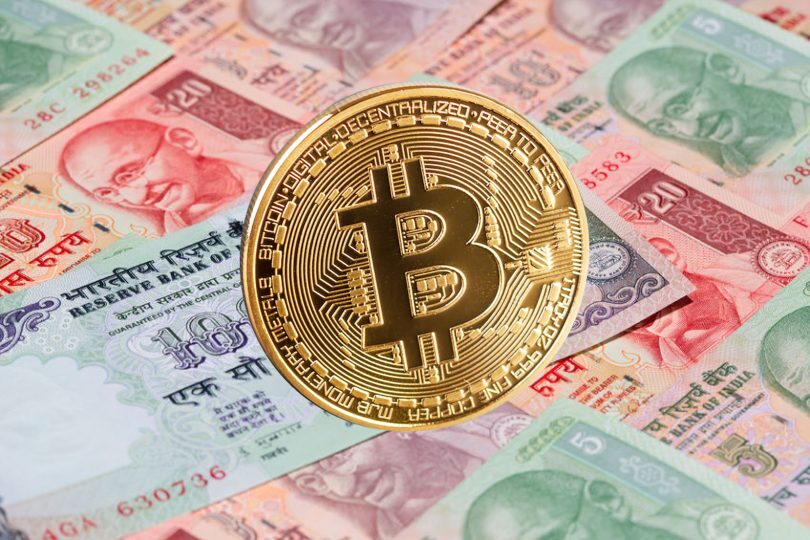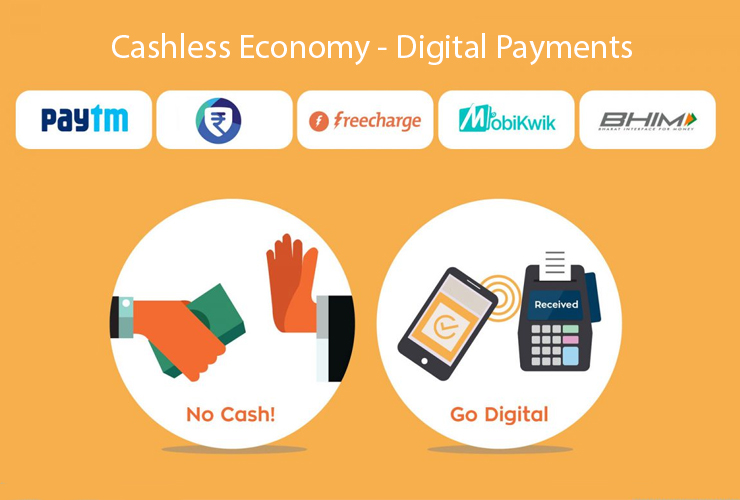
- Digital payments in India have grown at a phenomenal speed, some accounts suggest that there has been an overall 60% rise in the use of digital payments since demonetisation
- A central bank digital currency would be an electronic form of central bank money that could be used by households and businesses to make payments.
- Digital currency does not have to replace bank notes in fact it will complement bank notes. Rs 500 digital currency would have the same value as Rs 500 physical note.
- Unlike a flat currency, digital currency is by its nature traceable. Digital currencies can show the movement of money in an economy. It can build a record of the trail of transactions as it changes hands.
- Digital currency can be programmed to reach a certain section of society in a very specific time. This will be a great tool for the government to reach out to backward classes of the country with specific schemes.
- However, there are many challenges ahead such as creating a safe and protected infrastructure. Just as any algorithm is susceptible to hacking, digital currencies too are prone to hacking
- Digital currency is a good move by the government and the RBI as it is the next and natural progression to a digital and cashless economy as envisioned by PM Narendra Modi.
“Cash is king but digital is divine”
On the 25th of January 2021 India’s central bank issued a statement saying it was examining the need for a central bank digital currency, the popularity of crypto-currencies in the last couple of years and the fact that other nations including competitors in the global economy like China have made RBI think on these lines.
Over the past few years digital payments in India have grown at a phenomenal speed, some accounts suggest that there has been an overall 60% rise in the use of digital payments since demonetisation, there has also been a reduction of 3.5 lakh crore of notes in the economy since demonetisation, the natural progression of these trends is a RBI backed or run digital currency.
The function of RBI like any other central bank is to provide safe money and a risk free means of payment to householders, businesses and the wider financial system, In the pursuit of these goals the reserve bank has always found newer and safer ways of ensuring transactions, be it moving from coins to notes or moving to more safer and durable form of notes or as in recent history moving to digital transactions through RTGS or NEFT, now with the emergence of crypto currencies RBI finds itself at another crossroads where it will have to adopt to electronic money becoming a part of our transaction network while maintaining monetary and financial stability.
What is CBDC?
Today the public holds their money in the form of bank notes issued by the RBI. A central bank digital currency would be an electronic form of central bank money that could be used by households and businesses to make payments.
Digital currency does not have to replace bank notes in fact it will complement bank notes. Rs 500 digital currency would have the same value as Rs 500 physical note.
Advantages of a digital currency

An ex Indian Prime minister had famously said that only 15 paisa of every rupee sanctioned by the government of India reaches the final beneficiary. Though the present government has managed to stop this blatant corruption in the system, pilferage still do remain a threat to the delivery of welfare schemes in India. This is due to the political and administrative system of the country. Unlike a flat currency, digital currency is by its nature traceable. Digital currencies can show the movement of money in an economy. It can build a record of the trail of transactions as it changes hands.
For those of us who have had the privilege of working in rural India we have seen how mostly all transactions are done in cash. 60-70% of any real estate deal happens in cash causing huge losses to the exchequer and also giving rise to a mafia of anti social elements who then use this money to win influence in local politics.
Demonetisation curtailed such activities to a certain extent for a certain time period but a digital currency will wipe out black money in the real estate sector. Black money generated in the real estate sector is a serious cause of concern for the government.
The government today to alleviate poverty spends a huge part of its budget in poverty alleviation programs and rightly so. For India to become a developed economy we cannot have 30% of the population living below the poverty line. But unfortunately due to leakages in the system due to the prevalence of cash this money does not reach its intended beneficiaries, with the traceability of digital currency government will be able to trace every penny it spends on welfare schemes and the algorithm with which digital currency is designed will ensure that this digital money is spent only on what it is indented for.
For example, if the Government of India is giving Rs 12000 for the construction of a toilet this digital money can be programmed in such a way that it can be used only for the purchase of bricks, cement or other items needed for a toilet. If this Rs 12000 is used for any other purpose other than toilet construction then a flagging mechanism can be set up and the guilty can be caught and punished.
Government can also use digital currency to control inflation. When the government feels there is speculation happening in a certain food commodity which is against national interest, the government can use the traceability aspect of this currency and calm down prices.
Digital currencies along with being traceable are also programmable i.e. digital currency can be programmed to reach a certain section of society in a very specific time. This will be a great tool for the government to reach out to backward classes of the country with specific schemes.
Conclusion
Of course as good as all this sounds there are many challenges ahead. Challenges such as creating a safe and protected infrastructure are a reality. Just as any algorithm is susceptible to hacking, digital currencies too are prone to hacking as seen in 2016 with the hacking of the Ethereum network which resulted in theft of 150 million US.
But all in all it is a good move by the government and the RBI to start thinking of a central bank digital currency. This is the next and natural progression to a digital and cashless economy as envisioned by PM Shri Narendra Modi.
(Author is an entrepreneur and has previously worked with JM Morgan Stanley in the field of finance. He is an alumnus of Aston University in Birmingham. Views expressed are personal)
